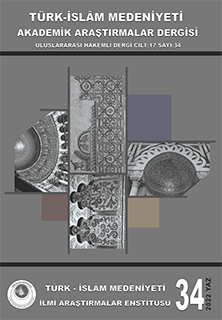Analysıs Of Tradıtıonal Konya House Indoor Components Accordıng To Anthropometrıc Data; Samples Of Sedırs
Keywords:
Anthropometric Data, Konya Houses, Fixed Components, SedirAbstract
The aim of this study is directed at the identification and analysis of “sedir” having an important place in the interior spatial configuration of traditional Konya house. A relation is established between the height and width of the sedir – one of the fixed fittings in interior space of Konya houses – and the anthropometric data belonged to Turkish people. In the frame of this relation, the various shapes of human body formed while using this fitting and the anthropometric data of these body shapes are compared with sedir fitting. The stance forms directed at actions and the anthropometric data of these stance forms are obtained from previously done researches. Fitting analyses are performed with the anthropometric data of the stance form determined according to the action. Here the basic aim is to use the results exposed from the analysis of the height and width of sedir –one of the fixed fitting of traditional Konya houses – according to the average data obtained from the research studies about the determination of the anthropometric structure of Turkish people, today in outfitting studies.
References
ARAT, Y., 2011, Analysis of Traditional Turkish House Indoor Components Based on Anthropometric Data; Konya Houses, Selcuk University Graduate School of Natural Sciences, PhD. diss, Konya.
ARAT, Y., 2012, Reading through the Traditional Turkish House Interior Space Components: Examples of Konya Houses, Türk İslam Medeniyeti Akademik Araştırmalar Dergisi, Uluslararası Hakemli Dergi, Year: 7, Issue: 13, pp.125-138.
BARAN, M., 2000, Halkbilimi bağlamında Anadolu-Türk Konutunun Mekânsal Oluşumu, Yıldız Technical University Graduate School of Natural Sciences, PhD. diss, İstanbul.
BEKTAŞ, C., 2007, Türk Evi, Bileşim Press, İstanbul.
BERK, C., 1951, Konya Evleri, Doçentlik Çalışması, İstanbul Teknik Üniversitesi, İstanbul Matbaacılık, İstanbul.
CRONEY, J. 1971, Antropometrics for Designers, Van Nostrand Reinhold Company, New York.
ELDEM, S. H., 1987, Türk Evi III Osmanlı Dönemi ‘Turkish Houses Ottoman Period’, Türkiye Anıt Çevre Turizm Değerlerini Koruma Vakfı Yayınları, İstanbul.
GÜNAY, R., 1981, Geleneksel Safranbolu Evleri ve Oluşumu, Kültür Bakanlığı Yayınları, Ankara.
İŞERİ, A. and ARSLAN, N., 2009, Estimated Anthropometric Measurements of Turkish Adults and Effects of Age and Geographical Regions, International Journal of Industrial Ergonomics, 39, Available at www.elseiver.com/locate/ergon.
KAHRAMAN, B., 1997, Geleneksel Türk Odasında Ahşap Mimari Elemanlar, Mimar Sinan University Graduate School of Natural Sciences, İstanbul.
KUBAN, D., 1995, Türk “Hayat”lı Evi, Eren Yayıncılık, İstanbul.
KÜÇÜKERMAN, Ö., 1988, “Kendi Mekânını Arayışı İçinde Türk Evi”, Türkiye Turing ve Otomobil Kurumu Yayınları, İstanbul.
OBORNE, D. J., 1995, Ergonomics at Work. Human Factors in Design and Development, John Wiley & Sons Inc., England.
ODABAŞI, A. S., 1998, 20. Yüzyıl Başlarında Konya’nın Görünümü, T.C. Konya Valiliği İl Kültür Müdürlüğü, Yayın No: 16, Konya, p. 54.
ÖNGE, Y., 1991, Konya Evinin Tezyinatı, Türk Halk Mimarisi Sempozyumu Bildirileri, 5-7 Mart 1990, Kültür Bakanlığı Halk Kültürünü Araştırma Dairesi Yayınları: 148, Seminer, Kongre Bildirileri Dizisi: 30, Ankara: Ofset Repromat Matbaası.
PHEASANT, S., HASLEGRAVE, M. C., 1996, Bodyspace. Anthropometry, Ergonomics and the design of Work, Taylor and Francis Group, London.
SAYAN, Y., 1995, Uşak’taki Tarihi Türk Evleri, Yüzüncü Yıl University Graduate School of Social Sciences, Archaeology and History of Art, Van.
YÜREKLİ, H. 1979, Türk Evi”nin Karakterisistiklerinin Dış Gözlem İle Saptanması İçin Bir Yöntem, ODTÜ Mimarlık Fakültesi Dergisi, Cilt 5, Sayı 1, Bahar, Ankara.
Downloads
Published
How to Cite
Issue
Section
License

This work is licensed under a Creative Commons Attribution-NonCommercial 4.0 International License.







